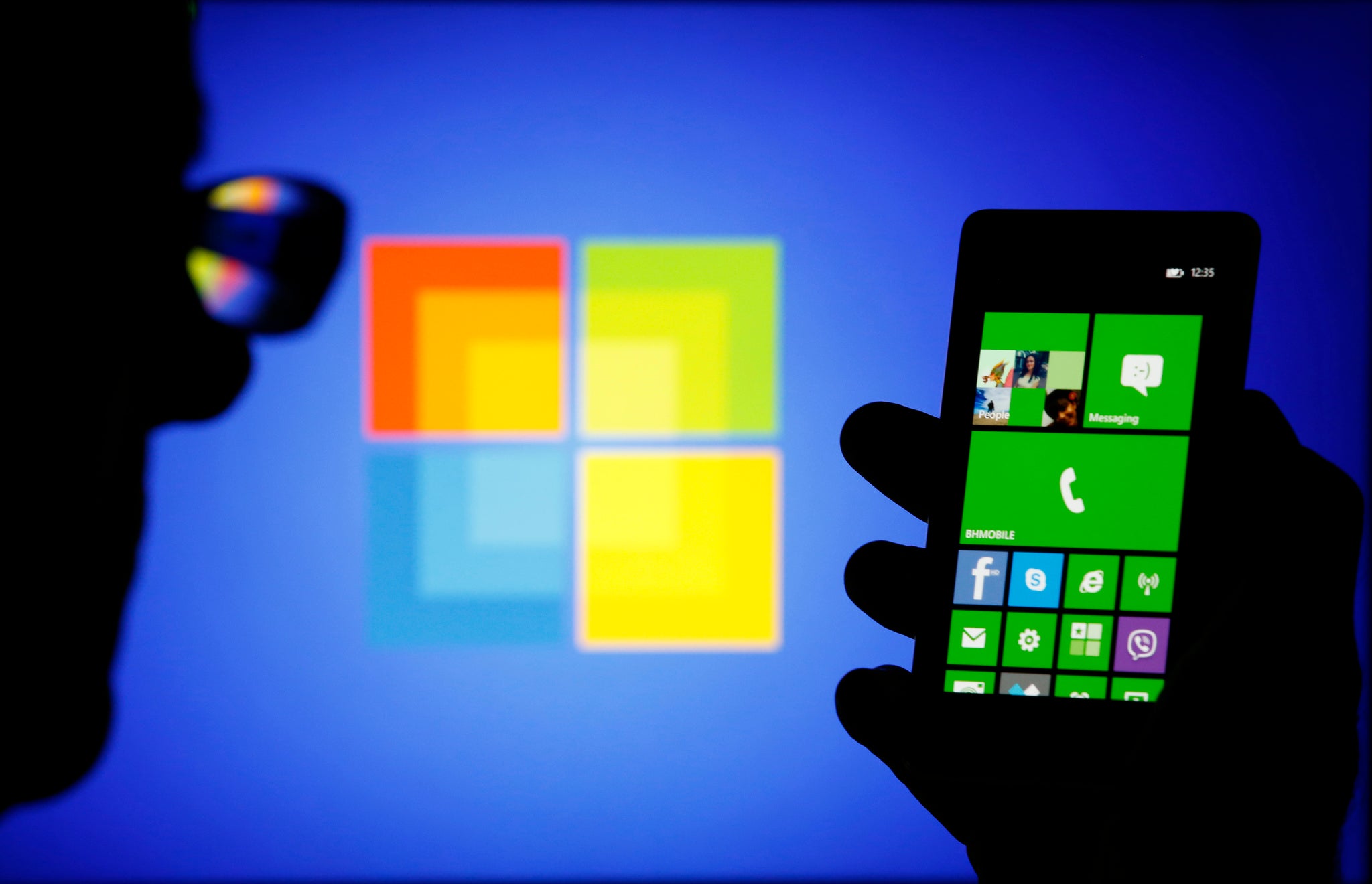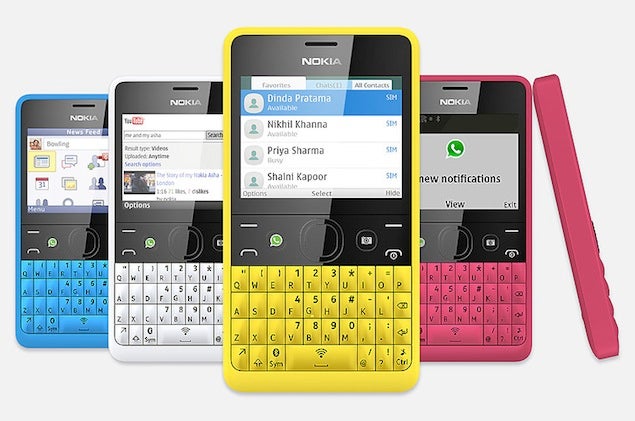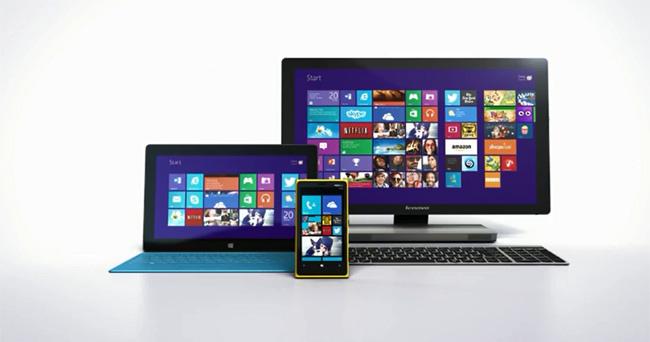Four reasons why Microsoft had to buy Nokia
Nokia has agreed to sell its main handset business to Microsoft for 5.44 billion euros (£4.61 billion)

Your support helps us to tell the story
From reproductive rights to climate change to Big Tech, The Independent is on the ground when the story is developing. Whether it's investigating the financials of Elon Musk's pro-Trump PAC or producing our latest documentary, 'The A Word', which shines a light on the American women fighting for reproductive rights, we know how important it is to parse out the facts from the messaging.
At such a critical moment in US history, we need reporters on the ground. Your donation allows us to keep sending journalists to speak to both sides of the story.
The Independent is trusted by Americans across the entire political spectrum. And unlike many other quality news outlets, we choose not to lock Americans out of our reporting and analysis with paywalls. We believe quality journalism should be available to everyone, paid for by those who can afford it.
Your support makes all the difference.Microsoft’s acquisition of Nokia’s Devices and Services business looks like it will be the billion dollar plan that pushes Windows Phone into the big leagues. In an email to staff Microsoft CEO Steve Ballmer has described the move as “a bold step into the future” and the “next big phase of the transformation we announced on July 11.”
This ‘transformation’, turning Microsoft into a ‘devices and services’ company, is key to the company's continuing survival, and would be impossible without Nokia. Here are four reasons why the acquisition had to happen:
Microsoft need to keep its momentum
Recent industry figures have shown Microsoft’s Windows Phone 8 posting its highest ever market share (8.3 per cent across five major European markets: UK, Germany, France, Italy and Spain), allowing the mobile OS to leapfrog BlackBerry (they outsell them in 34 countries) and become the third-most popular globally.
This means that Windows Phone only holds 3.7 per cent of the global market – a tiny figure compared to Android (who currently have a 65 to 80 per cent share depending on which data you use) but still a significant amount of growth considering the entrenched ecosystems Microsoft are in competition with.
In 2011 IDC predicted that by 2015 Windows Phone would overtake iOS worldwide, but in 2012 they updated these figures, suggesting that this overtaking wouldn’t happen until 2016. Microsoft themselves have said that they want a 15 per cent market share by 2018.
Meanwhile, figures released by BGR note that 81.6 per cent of all Windows Phone sales coming from Nokia hardware, and as Ballmer noted during the Nokia conference: "sales of Nokia Windows Phones have gone from literally zero two years ago to 7.4 million units in the most recently reported quarter.” It seems logical that if Microsoft want to capitalise on this momentum, small though it is, then assuming direct control of Nokia’s resources was the best way to go.

Unifying hardware and software
This direct control will mean better integration of handsets with Windows Phone 8. Apple is the best example of this approach to the mobile industry as they keep the production of both hardware and software in-house.
This benefits developers by reducing OS fragmentation and creating consistent hardware specifications (meaning programmers don’t have to code their software to work on many different systems); it boosts the OS’s security by encouraging users to update to the latest version of the software; and it means that the user-experience is generally more consistent, leading to greater trust in the brand.
However, this approach is not without its downsides. For a start it puts Microsoft in direct competition with other manufacturers, and despite assurances from the company that they still want to “enable the innovations of our hardware partners to shine through on the Windows platform”, this is likely to mean that Windows Phone 8 will be shunned by other phone-makers.
And of course, Microsoft have already tried this unified approach before, a move which led only to the $900m write-down of the Surface tablets. These were specifically designed to fit perfectly with Windows 8, crossing the divide between touchscreen devices and laptops. Yes, the difficulties that faced the Surface are different from those that Windows Phone must contend with, but the example shows that building both hardware and software in concert does not guarantee success.

The Low End Theory
However, it’s not just the high-end of the market that Nokia’s acquisition will affect. Feature phone still account for around half of all mobiles, and as the market for high-end devices becomes saturated a smart move for manufacturers is to produce cheaper handsets – eg, the imminent coming of the iPhone 5C. This is not to say that the likes of Apple or Samsung are out of the game (older iPhone and Galaxy models do very well with first-time owners) but there is a huge potential landgrab for Microsoft here.
Mid-range Lumia devices such as the 520 have been great in attracting first-time smartphone users. The handsets are cheap but durable, and Windows Phone 8 has been optimized beautifully to work fluidly even on lower-specced hardware. The design language of colourful contrasts, tiles and fonts looks good even on a low-resolution screen and design flaws that might deter power-users (the lack of a decent notification system for example) will go unnoticed by those new to smartphones.
More importantly than this though, the purchase of the larger Nokia brand is perfect for targeting ‘the next billion’ of users to access the web. Microsoft purchase also includes a ten-year licence to use the Nokia brand on feature phones, and simply by maintaining the Finnish manufacturer’s high standards they’ll have an easier task of persuading customers to transfer to the Windows Phone ecosystem over the next decade. The acquisition also includes the low to mid-range Asha brand, described by Microsoft as an “on-ramp to Windows Phone.”

The Halo effect
By building up Windows Phone though, Microsoft are doing much more than simply giving life to an ailing OS: they’re setting out a clearer path for the whole Windows ecosystem.
The ‘halo effect’ is often referenced to in tech circles, referring to the cognitive bias that leads us to judge an individual based on our overall impression rather than specific actions. Essentially, by giving customers a good Windows experience via their phones, Microsoft are more likely to keep people using their software in other devices.
This was made clear in a ‘strategic rationale’ Microsoft released to investors after the acquisition. The document states how building the success of Windows Phone will help the company to create “a family of devices with integrated services”. These include the likes Office, Skype, Xbox Live, SkyDrive and Bing: services which are almost-globally familiar, and that can be pushed to more users via mobile.
From the same document Microsoft lay out their need as simply as possible: “We will continue to support iPhone and Android/Galaxy phones with our services but we cannot risk having Google or Apple foreclose app innovation, integration, distribution or economics.”
As the world goes mobile, Google and Apple are wresting more and more control away from desktops as their services (everything from Google Maps to the App Store) become dominant forces. Buying Nokia not only bought their manufacturing resources but also their mapping services - a key point of entry for mobile users.
All of these factors put together - the holistic approach to hardware and software; targeting 'the next billion'; developing the Windows ecosystem - make Microsoft's acquisition of Nokia more than a 'smart move' - really, it was only move that made sense.

Join our commenting forum
Join thought-provoking conversations, follow other Independent readers and see their replies
Comments